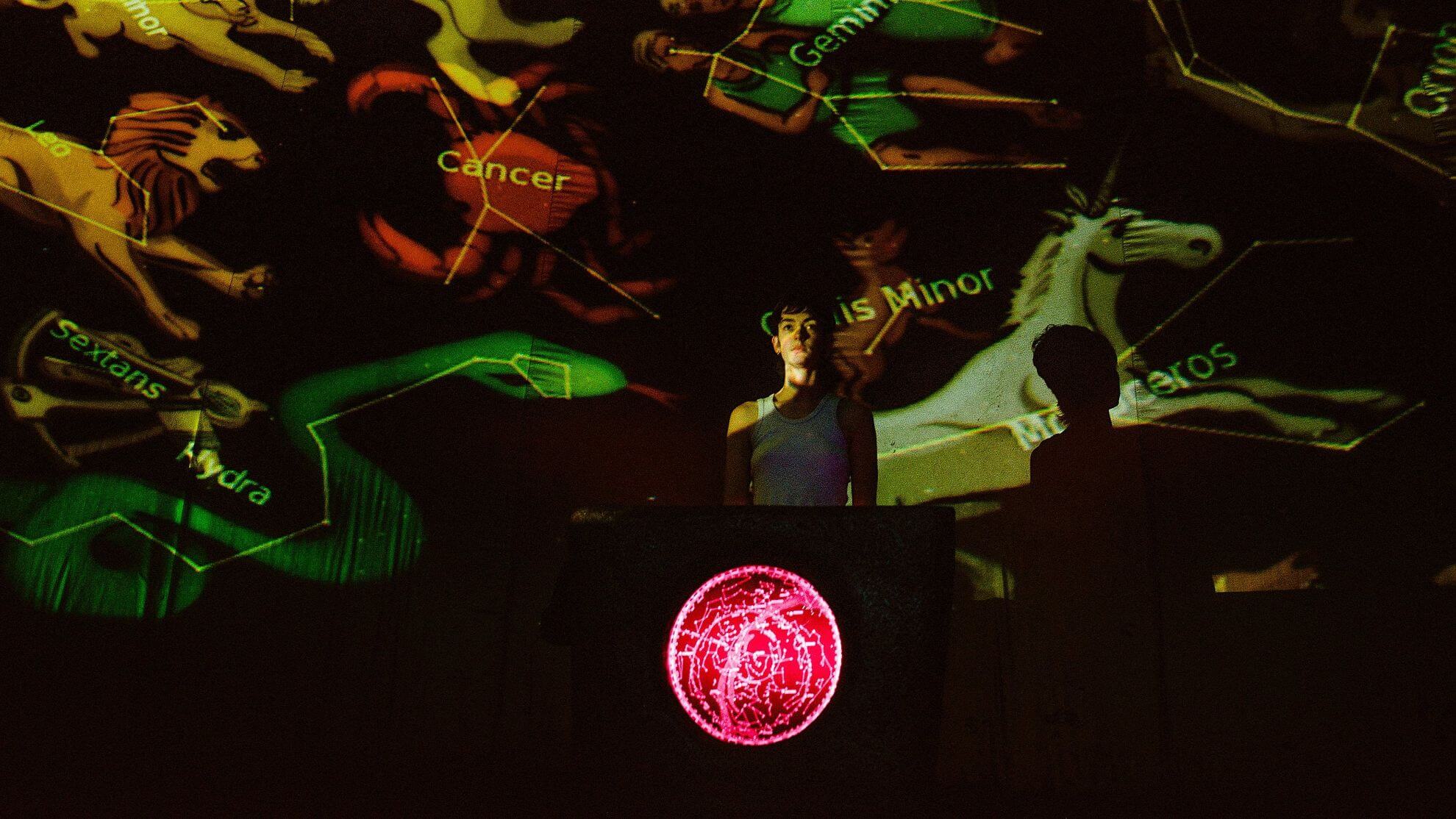I Saw the TV Glow is a 2024 film written and directed by Jane Schoenburn and is a hybrid of genres including drama, horror, mystery, and supernatural. The film follows two teenagers, Owen (Justice Smith) and Maddy (Brigette Lundy-Paine), who bond over a low-budget supernatural TV show aired on the Young Adult Network titled The Pink Opaque. However, when the show is mysteriously canceled and they grow up, Owen’s view of reality begins to crack.
In I Saw the TV Glow, the screen becomes a mirror, reflecting not only the faces of its characters but also the myriad ways in which television has shaped our understanding of self, community, and reality. Known for their previous film We're All Going to the World's Fair (2021), Schoenbrun delves deeper into the surreal and often unsettling landscape of human experience, presenting a dense and multifaceted narrative that resonates with contemporary audiences while also invoking a poignant nostalgia for the 1990s.
The plot ostensibly centers on the lives of depressed teenagers whose obsession with a cult TV show blurs the boundaries between fiction and reality. However, this straightforward summary belies the rich layers of interpretation that Schoenbrun weaves into the story's fabric. On one level, I Saw the TV Glow can be read as a Trans* allegory, exploring the struggles of living authentically in a world that often demands (gender) conformity. On another level, it serves as a metaphor for mental health issues such as depression and anxiety, capturing the numbing effects these conditions can have on one’s sense of self and perception of reality. The film’s open-ended nature invites viewers to derive personal meanings, empowering them to engage deeply with the narrative.

A film shaped by the 1990s and early 2000s fandom cultures. Schoenbrun meticulously captures the era’s aesthetic, with subtle nods to iconic shows like Charmed, Buffy the Vampire Slayer, Sabrina the Teenage Witch, and Goosebumps. These references are not merely nostalgic flourishes but serve to underscore the materiality of fandom during an era when 'appointment television' and sharing VHS tapes with friends were social rituals. The film recreates the tactile experiences of the past, from the clunk of a VHS tape being inserted into a VCR to the fuzzy glow of CRT screens, evoking a profound sense of longing for a time when TV served as a communal experience and a sanctuary for many, particularly those that were disenfranchised.
Not a film that simply basks in nostalgia. Schoenbrun's narrative is also infused with a Lynchian surrealism reminiscent of something like Twin Peaks: The Return. The film is punctuated by moments of abstraction and visceral, uncanny scenes that disrupt and disturb. This approach, while captivating, may prove frustrating for some viewers. The acting style, marked by a slow, deliberate pacing, seems to symbolize the emotional weight carried by the characters, often teetering on the edge of bleakness. For some, this might come across as unconvincing or excessively dour, depending largely on one’s personal relationship to the film’s thematic concerns.
One of the most significant critiques of the film is its pacing towards the end. The final act feels drawn out, with the narrative seeming to conclude several times over a span of 20-25 minutes. This protracted ending can be tiresome, especially in a film that runs for only 1 hour and 40 minutes. Audiences seeking a conventional story arc may find this aspect particularly challenging, as the film’s structure somewhat defies traditional expectations. Despite these criticisms, Schoenbrun’s distinctive directorial voice shines through, crafting a work both original and thought-provoking. I Saw the TV Glow is a film that demands active engagement, refusing to offer easy answers or clear resolutions. Its strength lies in its ability to provoke reflection and discussion, leaving viewers to ponder the nature of authenticity, the impact of media on identity, and the often-murky line between reality and fiction.
I Saw the TV Glow is a film that challenges its audience to look beyond the surface. While its pacing and acting style may not appeal to everyone, its rich thematic content and evocative homage to 1990s fandom culture make it a compelling watch. Schoenbrun has crafted a narrative that is as complex and multifaceted as the issues it explores, offering a haunting cinematic experience that lingers long after the screen goes dark.

Watch I Saw the TV Glow
